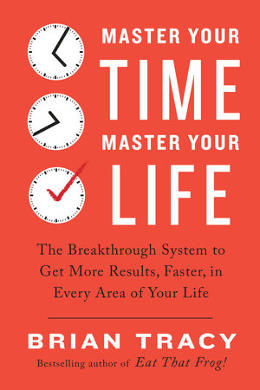Use This Formula To Tame Your Hopeless To-Do List
You know how to write a to-do list. If you’re like lots of people, you may already be in the habit of writing out a list of the day’s tasks as soon as you get into the office each morning or even the night before.
The bigger challenge is figuring out how to prioritize it. No matter how productive you are, there will always be too many tasks for you to complete. You’re always going to have to choose which ones to do first, which to do second, and which tasks to do not at all. It isn’t always easy to remember that it’s not the amount of time you put in, it’s the value of the work and the things you achieve in that time that really counts. Your job is to focus on accomplishments rather than activities.
Allocating your time based on the value of the task starts with your to-do list, and this method can help.
The ABCDE Method
The “ABCDE method” is deceptively simple: Before you start your workday, go through your list and write one of these five letters before each task or activity. Think about the likely consequences of completing or not completing each task. Something is only as important as its potential consequences. Likewise, an unimportant task is one that has low or no potential consequences. Consequences are everything.
Successful, highly productive people spend most of their time working on activities that have big potential consequences. Unsuccessful people often work harder and longer hours, but they spend too much of their time working on activities without much impact one way or the other. It doesn’t really matter if they complete them or not.
Put the letters A, B, C, D, or E next to each task on your list. An A activity is something that you must do. It has serious potential consequence for completion or non-completion. If you don’t do this task or get it done on time, there are going to be serious problems. These are the most important things that you do each day.

Put a B in front of activities that you should do, activities that have mild potential consequences if they are done or not done. You need to get to these tasks sooner or later, but they are not as important as your A tasks. The rule is that you never do a B task when there is an A task left undone.
A C task is something that would be nice to do, but it has no consequences at all, either for good or ill. Checking your personal email, phoning home, having coffee with a coworker, are all activities that are nice to do but it does not matter at all whether you do them or not. These items don’t often make it onto our to-do lists but tend to creep into our workdays unplanned. Since you’ll probably be checking Facebook anyway, it helps to include that—the key is to take an honest inventory of what you’ll do at work each day before you can take action accordingly.
Divide, Delegate, And Conquer
Unfortunately, the great majority of people spend most of their time doing B and C tasks, and they think that because they are doing them at their workplace they are actually working. But this isn’t true. Just because you’re at work does not mean that you’re indeed working.
Put a D next to all tasks you can delegate to anyone else who can do them. Think about the value of the work you do in monetary terms: If you aspire to earn $25 per hour ($50,000 per year) or $50 an hour ($100,000 per year), don’t spend your time doing tasks that someone else can do for $10 an hour.
An E task is something that you can eliminate and it won’t make any difference at all. It may be a task that you have been doing for a while (or even just a bad work habit . . . sorry, Facebook), but it’s no longer important. It may no longer be your task to do. Whatever the case, it can be eliminated safely and have no consequences at all for your career.
Now go back over your list and organize your A tasks by priority by writing A-1, A-2, A-3, and so on next to your most important tasks. Do the same for your B tasks. Finally, start on your A-1 task, your most important and valuable use of your time. Resolve to concentrate single-mindedly on that one task until it’s 100% complete.
This simple formula—making a list, prioritizing it, and then starting and completing your most important tasks first, uninterrupted—can help you dramatically improve the quantity and quality of your output at work. It’s the key to high results. And remember, results are everything.
This article is adapted from Master Your Time, Master Your Life by Brian Tracy, from TarcherPerigee, a division of Penguin Random House. Copyright 2016, Brian Tracy. It is reprinted with permission.
Fast Company , Read Full Story
(31)














